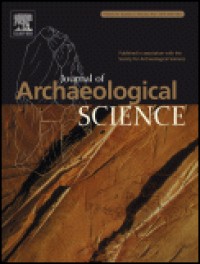Journal of Archaeological Science Q1 Unclaimed
Journal of Archaeological Science is a journal indexed in SJR in Archeology (arts and humanities) and History with an H index of 159. Journal with a Single blind Peer Review review system, and It has a price of 2970 €. The scope of the journal is focused on Archaeology,. It has an SJR impact factor of 1,242 and it has a best quartile of Q1. It is published in English. It has an SJR impact factor of 1,242.
Journal of Archaeological Science focuses its scope in these topics and keywords: archaeological, age, analyses, bronze, evidence, glass, study, area, blue, dating, ...
Type: Journal
Type of Copyright:
Languages: English
Open Access Policy: Open Choice
Type of publications:
Publication frecuency: -


2970 €
Inmediate OANPD
Embargoed OA0 €
Non OAMetrics
1,242
SJR Impact factor159
H Index136
Total Docs (Last Year)348
Total Docs (3 years)10534
Total Refs1079
Total Cites (3 years)336
Citable Docs (3 years)2.85
Cites/Doc (2 years)77.46
Ref/DocOther journals with similar parameters
Journal of Archaeological Research Q1
Journal of World Prehistory Q1
Journal of Archaeological Method and Theory Q1
Quaternary Science Reviews Q1
Journal of Agrarian Change Q1
Compare this journals
Aims and Scope
Best articles by citations
The potential of hyperspectral and multi-spectral imagery to enhance archaeological cropmark detection: a comparative study
View moreGoogle earth and the archaeology of Saudi Arabia. A case study from the Jeddah area
View moreBulk stable carbon and deuterium isotope analyses of bitumen artifacts from Hacinebi Tepe, Turkey: reconstructing broad economic patterns of the Uruk expansion
View morePrehistoric camelids in the lowlands of Western Ecuador
View moreAdvances in world archaeology, vols 4 & 5
View moreLarge variation in nitrogen isotopic composition of a fertilized legume
View moreClimate change and the expansion of the Scythian culture after 850 BC: a hypothesis
View moreGeophysical prospection and soil chemistry at the Early Copper Age settlement of Veszto-Bikeri, Southeastern Hungary
View moreIdentification of preserved fatty acids in archaeological floor sediments from prehistoric sites at Ban Non Wat and Nong Hua Raet in northeast Thailand using gas chromatography
View moreRehydroxylation dating of fired clays: an improved time-offset model to account for the effect of cooling on post-reheating mass gain
View moreAnthropochorous earthworms (Lumbricidae) as indicators of abandoned settlements in the Faroe Islands
View morePalaeodietary implications from stable isotopic analysis of residues on prehistoric Ontario ceramics
View morePalaeodietary Implications of Isotopic Variability in Eurasian Lacustrine Fish
View moreIntegration of geophysical surveys, ground hyperspectral measurements, aerial and satellite imagery for archaeological prospection of prehistoric sites: the case study of Veszto-Magor Tell, Hungary
View moreThe grasshopper or the ant?: cultigen-use strategies in ancient Nubia from C-13 analyses of human hair
View moreClay paste mixtures identified by Neutron Activation Analysis in pottery of a Roman workshop in Bonn, Germany
View moreIron artifacts from the land of Kush
View moreThe effects of striped hyaena activity on human remains
View moreDiagenesis and survival of osteocalcin in archaeological bone
View moreThe human uses of flint and chert
View moreThe Relationship between Harris Lines and other Aspects of Skeletal Development in Adults and Juveniles
View moreLate-Holocene Dungeness crab (Cancer magister) harvest at an Oregon coast estuary
View moreSr and Sr/Ca in marine and terrestrial foodwebs in the Southwestern Cape, South Africa
View moreThe shell game: analytic problems in archaeological mollusc quantification
View more
Comments